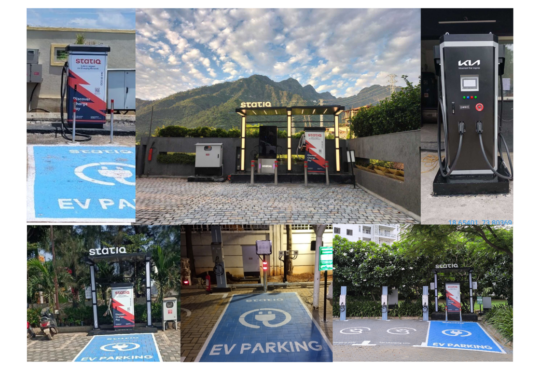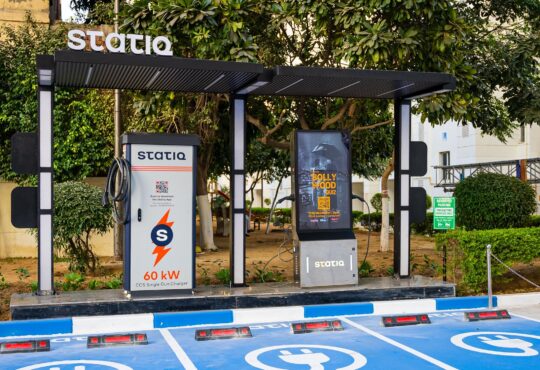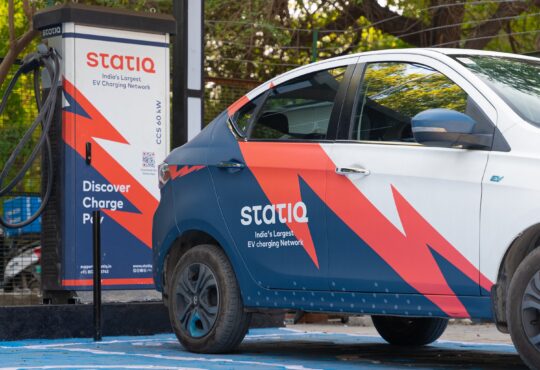
Electrifying the future: How electric vehicles (EVs) can propel climate change mitigation

As published in TOI on August 3, 2023
Climate change conversations have dominated global circles in recent times, especially as the world is now faced with devastating effects of global warming. From flash floods across major parts of the world to landslides, and the hottest climates the world has seen in decades, debates around climate change have become more intentional than ever before. Within the scheme of things, energy transition from fossil fuels to renewables remains one of the most practical ways to address climate change, and this manifests in a number of innovations.
The proliferation of electric vehicles has intensified in the last 10 years as more brands continue to enter the space. Even though the West takes the lead in terms of EV market size, nations like India are also beginning to catch up. As of 2022, the Indian EV market was valued at $3.21 billion, with projections stating that the industry will gross about $114 billion by 2029. This is a remarkable feat and more investments are expected in the coming years, especially in areas like electric vehicle charging stations and other ancillary services.
EVs as a catalyst for climate change mitigation

A 2021 report by the U.S Department of Energy revealed that vehicles contributed nearly 1.5 billion metric tonnes of greenhouse gases every year. This causes massive environmental pollution and depletion of the ozone layer, which lead to climate change. It also indicates that ensuring a larger portion of the 1.446 billion cars in the world run in renewable energy will significantly reduce GHG emissions. Unlike fossil fuel, which is still the source of power for most highway vehicles, electricity is a cleaner source of energy that emits next to zero gas because no fuel is burnt.
Even in nations where electricity generation is coal-based, EVs produce relatively lower emissions than gasoline and diesel, especially when measured over their lifetime. Where batteries are produced using clean energy, emission is much lower. In fact, complete electric vehicles do not feature a tailpipe because they don’t produce any exhaust, making them environmentally friendly. On average, electric vehicles produce three times less emissions than gasoline, diesel, and kerosene vehicles.
Carbon emission caused by combustion in gasoline and diesel-powered vehicles go into the atmosphere as greenhouse gas and trap heat from the sun very close to earth. This then leads to excessive heat, which also spirals into several other weather occurrences, including excessive rainfall and flooding due to increased evaporation, heatwave, wildfires, and other conditions. Full electric vehicles do not release carbon. However, the battery and electricity-production processes must also be done with clean energy to achieve zero carbon in the entire EV process.
Thankfully, the transition is in full swing already, with EVs accounting for 13% of all car sales in 2022, and nations like France and others in the EU fixing 2025 as the deadline to end the sale of internal combustion engines (ICE) cars. In India, there’s also a significant increase in the number of EV registrations, especially with brands now targeting millenials and Gen Zs (who have rising disposable income) with sleeky electric cars. EV registrations in the country rose from around 330,000 units in 2021 to 1.02 million units in 2022. Between January and March 2023, the country had already registered 278,000 EVs, according to the Road Transport and Highways Ministry.
A holistic process, championed by trailblazers

The entire EV ecosystem is made possible by a number of players. There are the inventors and innovators who design the technology, then the manufacturers, and suppliers of different parts required, such as the battery. On the other hand, there is the EV charging sector that ensures EV owners can move from point A to B without hitches. Together, these players are building an ecosystem that is safer for humans, and guarantees the security of not just the present, but also for future generations.
Also Read,
The Environmental Impact of EV Charging: Analyzing the Carbon Footprint of Charging Stations



